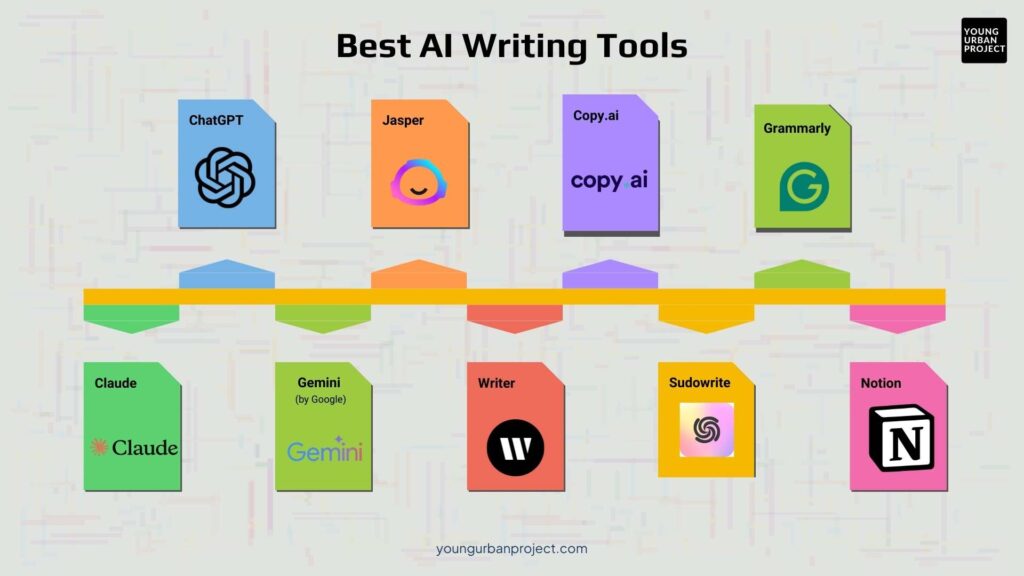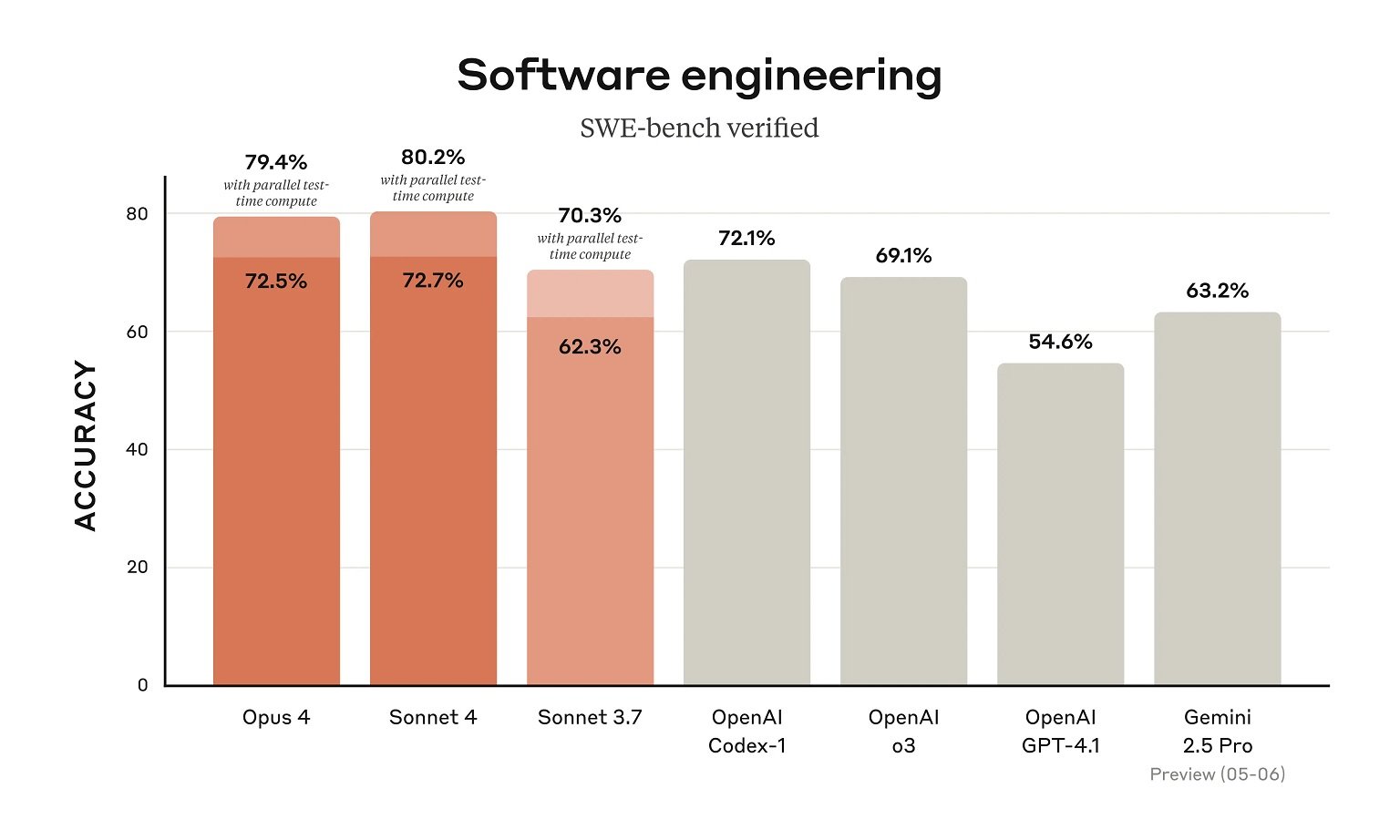How Claude Sonnet 4 Elevates Creative AI Writing in 2025
Discover how the latest AI breakthrough is revolutionizing creative writing, storytelling, and content creation for writers worldwide.
Creative writing just got a major upgrade. Claude Sonnet 4, released in May 2025, isn't just another AI model. It's a game-changer for writers, storytellers, and content creators worldwide.
While other articles focus on coding and technical benchmarks, this guide dives deep into what matters most for creative writers. How does Claude Sonnet 4 actually help you write better stories, craft compelling copy, and push creative boundaries?

🎙️ Tech Creative Insights
How Claude Sonnet 4 Elevates Creative AI Writing in 2025
🎧 Listen Now
Duration: 3 minutes 33 seconds
📅 Episode Date
May 26, 2025
⏱️ Duration
3:33 minutes
📥 Download Options
Download MP3📝 Episode Description
Welcome to a deep dive into Claude Sonnet 4 and how it's revolutionizing creative writing in 2025. This episode explores:
- Key Features: Hybrid reasoning modes, extended context memory, and emotional intelligence
- Competitive Advantages: How Claude outperforms ChatGPT and Gemini in creative tasks
- Practical Applications: Fiction writing, copywriting, poetry, and screenwriting
- Pro Tips: The Character Voice Method and other advanced prompting techniques
- Getting Started: The Character Interview Project for beginners
- Accessibility: Free access makes professional AI writing tools available to everyone
Whether you're a novelist, copywriter, poet, or screenwriter, this episode provides practical insights into leveraging Claude Sonnet 4 as your creative AI partner.
🚀 Ready to start your creative journey? Visit claude.ai to get started!
What Makes Claude Sonnet 4 Special for Writers?
Claude Sonnet 4 stands apart from previous AI writing tools in several key ways. It understands nuance, tone, and emotional depth like never before.
Performance Highlights
Hybrid Reasoning Mode
Switch between quick responses and deep thinking modes. Perfect for when you need instant inspiration or detailed creative analysis.
Extended Context Memory
Remember details across 200,000 tokens. Your 5,000-word story keeps the same character voice from beginning to end.
Style Adaptation
Learn and mimic your unique writing voice. Maintains consistency across different projects and genres.
Emotional Intelligence
Understand subtext and emotional nuance. Creates more authentic character interactions and emotional depth.
How Claude Sonnet 4 Beats the Competition
Most reviews compare AI models on technical tasks. But for creative writing, the story is different. Let me show you where Claude Sonnet 4 truly shines.

| Feature | Claude Sonnet 4 | ChatGPT | Gemini |
|---|---|---|---|
| Storytelling | Excellent | Good | Good |
| Dialogue | Excellent | Good | Fair |
| Emotional Range | Excellent | Fair | Good |
| Cultural Fluency | Excellent | Good | Good |
Claude's Strengths
- Creates more nuanced characters and unexpected plot twists
- Natural conversations with character-specific voices
- Handles complex emotions and difficult topics
- Better understanding of modern slang and cultural references
Key Differences
Real Creative Writing Applications
Here's where Claude Sonnet 4 excels in practical creative scenarios:
Fiction Writing
Stories, novels, and creative narratives
Copywriting
Marketing and business content
Poetry & Arts
Creative expression and literary forms
Screenwriting
Scripts for film, TV, and theater
Your Creative Writing Workflow with Claude Sonnet 4
Here's how to integrate Claude into your actual writing process:
Ideation and Brainstorming
Start conversations with creative prompts to generate ideas and explore themes.
Example Prompts:
- "Help me explore themes around loss and redemption"
- "Generate 10 unique character concepts for a sci-fi story"
- "What are some fresh angles on the coming-of-age narrative?"
Outline Development
Claude excels at helping you structure your story or content.
Structure Assistance:
- "Create a three-act structure for my mystery novel"
- "Help me plot character arcs for my ensemble cast"
- "Suggest pacing for a 50,000-word novella"
Draft Writing
Use Claude as your collaborative writing partner during the drafting process.
Collaboration Methods:
- Write scenes together, alternating paragraphs
- Ask for dialogue when you're stuck
- Request descriptions of settings or characters
- Get unstuck when facing writer's block
Revision and Editing
Claude provides thoughtful feedback and suggestions for improvement.
Feedback Areas:
- "Does this dialogue sound authentic for a teenager?"
- "How can I strengthen the emotional impact of this scene?"
- "Are there any plot holes in this chapter?"
- "Suggest ways to vary my sentence structure"

Prompting Techniques That Actually Work
Generic prompts get generic results. Here are specific techniques for better creative output:
The Character Voice Method
The Constraint Technique
Constraints spark creativity. Try these examples:
- "Write a love story using only dialogue"
- "Create a thriller where every paragraph starts with a different letter"
- "Tell a complete story in exactly 100 words"
The Style Mimicry Approach
The Collaborative Building Method
Work together with Claude as a true creative partner:
Interactive Prompt Builder
Where Claude Sonnet 4 Struggles (And How to Work Around It)
No AI is perfect. Here are Claude's creative limitations and solutions:
Sometimes Overly Verbose
Can write longer than necessary, especially in detailed descriptions.
Can Be Too Polite or Safe
May avoid edgy content or controversial themes.
Limited Cultural Specificity
May lack deep knowledge of specific cultural contexts.
Struggles with Experimental Forms
Less effective with highly avant-garde or experimental writing styles.
Getting Started: Your First Creative Project
Ready to try Claude Sonnet 4? Here's a beginner-friendly creative exercise:
The Character Interview Project
Create a Character Concept
Develop a basic character idea with age, background, and a defining trait or conflict.
Ask Claude to Interview Your Character
Have Claude play the role of an interviewer asking your character questions.
Let the Conversation Develop
Allow the dialogue to flow naturally, revealing character depth and personality.
Write a Character-Driven Scene
Use insights from the interview to create a compelling scene featuring your character.
Example Character Prompt
Why This Exercise Works:
- Showcases Claude's dialogue strengths
- Develops character depth organically
- Creates usable material for larger projects
- Demonstrates collaborative writing
Performance & Benchmarks

Creative Writing Performance Comparison
Video Resources for Creative Writers
Real-World Creative Writing Tests
This video compares Claude Sonnet 4 and Opus 4 in real creative writing scenarios, showing practical differences for writers.
Claude vs ChatGPT for Writing
An in-depth comparison of ChatGPT and Claude for various writing tasks, helping you choose the right tool for your needs.
Pricing and Accessibility
One major advantage of Claude Sonnet 4 is accessibility. Unlike its more powerful sibling Opus 4, Sonnet 4 is available to free users.
Free Access
- Claude Sonnet 4 access
- Basic usage limits
- Standard response times
- Community support
Claude Pro
- Higher usage limits
- Faster response times
- Priority support
- Advanced features
API Access
- Pay-per-use pricing
- Integration capabilities
- Batch processing discounts
- Developer documentation
Your Creative AI Partner Awaits
Claude Sonnet 4 isn't just a better writing tool – it's a creative partner that understands nuance, maintains consistency, and sparks new ideas. While other AI models focus on raw power, Claude focuses on the qualities that matter most for creative work: understanding, collaboration, and genuine creativity.
Enhanced Understanding
Better comprehension of creative nuance and emotional context
True Collaboration
Works as a creative partner, not just a text generator
Future-Ready
Continuously improving AI capabilities for creative work
The future of writing isn't human versus AI. It's human creativity enhanced by AI capability. Claude Sonnet 4 makes that collaboration more natural and productive than ever before.
Related Resources
Frequently Asked Questions
Everything you need to know about Claude Sonnet 4 for creative writing in 2025
What makes Claude Sonnet 4 different from other AI writing tools?
Claude Sonnet 4 stands out with its exceptional understanding of nuance, tone, and emotional depth in creative writing. Unlike other AI models that focus primarily on technical tasks, Claude Sonnet 4 is specifically optimized for creative applications with enhanced emotional intelligence and cultural fluency.
Key differentiators include its 200,000-token context window (allowing it to remember up to 150,000 words), hybrid reasoning modes for both quick inspiration and deep analysis, and superior dialogue writing capabilities that create distinct character voices.
For a comprehensive comparison, check out Zapier's detailed Claude vs ChatGPT analysis which explores the specific advantages for creative work.
Is Claude Sonnet 4 free to use for creative writing?
Yes! One of Claude Sonnet 4's major advantages is that it's available to free users, unlike its more powerful sibling Claude Opus 4. This makes it an excellent entry point for writers who want to explore AI-assisted creative writing without financial commitment.
The free tier includes access to Claude Sonnet 4 with basic usage limits and standard response times. For writers who need higher usage limits, faster responses, and priority support, Claude Pro is available for $20/month.
You can start immediately at claude.ai to explore its creative writing capabilities at no cost.
How does Claude Sonnet 4 compare to ChatGPT for creative writing?
Claude Sonnet 4 generally excels over ChatGPT in creative writing scenarios. It produces more nuanced characters, creates unexpected plot twists, and handles dialogue with character-specific voices more effectively. Claude also demonstrates better emotional range and cultural sensitivity in creative contexts.
While ChatGPT might be more attentive to technical details, Claude offers superior "flavor, voice, and humor" according to user feedback. Claude's larger context window (200,000 vs 32,000 tokens) also means better consistency across longer creative projects.
Read the detailed analysis at AI Writing School's comparison guide for specific examples of their creative writing differences.
What are the best prompting techniques for creative writing with Claude Sonnet 4?
Effective prompting for Claude Sonnet 4 goes beyond generic requests. Use the "Character Voice Method" by specifying perspectives, emotions, and constraints: instead of "write a sad scene," try "write from the perspective of a 40-year-old single mother who just lost her job, using short, fragmented thoughts that show her overwhelm."
The "Constraint Technique" also works well - limitations spark creativity. Examples include "write a love story using only dialogue" or "create a thriller where every paragraph starts with a different letter."
For advanced techniques, explore Coursera's 2025 prompting guide which covers cutting-edge prompt engineering methods.
Can Claude Sonnet 4 help with different types of creative writing like fiction, poetry, and screenwriting?
Absolutely! Claude Sonnet 4 excels across multiple creative writing formats. For fiction, it handles complex character development, plot consistency, and genre-specific writing (mystery, sci-fi, romance, literary fiction). Its dialogue capabilities make it particularly strong for character-driven narratives.
For poetry, Claude can work with specific forms (sonnets, haikus, free verse) and create song lyrics with proper rhyme schemes. In screenwriting, it understands format-specific requirements and creates character-specific speech patterns with natural conversation flow.
Discover more creative applications at Kindlepreneur's comprehensive guide to AI writing tools for fiction and nonfiction writers.
What are the limitations of Claude Sonnet 4 for creative writers?
Claude Sonnet 4 has several limitations writers should be aware of. It can be overly verbose, especially in detailed descriptions (solution: request "tight, concise writing" or specify exact word limits). It may also be too polite or safe, avoiding edgy content or controversial themes.
The model sometimes lacks deep knowledge of specific cultural contexts and struggles with highly avant-garde or experimental writing styles. It may also produce content that feels slightly "AI-like" without proper prompting guidance.
Learn about AI writing best practices and limitations at The Authors Guild's AI best practices guide for professional authors.
How long can Claude Sonnet 4 remember context in a creative writing project?
Claude Sonnet 4 features an impressive 200,000-token context window, which translates to approximately 150,000 words of memory. This means it can maintain character consistency, plot details, and writing style across substantial creative projects - roughly equivalent to a 300-page novel.
This extended context is crucial for creative writing because it allows Claude to remember character backstories, maintain consistent voices, track plot threads, and preserve the emotional tone throughout long-form projects without losing important details.
Compare context capabilities across different AI models at Academia Scribes' detailed comparison which analyzes context windows for writing applications.
What's the difference between Claude Sonnet 4 and Claude Opus 4?
Claude Opus 4 is the larger, more powerful model designed for the most complex creative and analytical tasks. It excels at sophisticated reasoning, extended project work, and can run autonomously for longer periods. However, it's only available to paying customers and uses more computational resources.
Claude Sonnet 4 is optimized for general creative writing tasks and offers excellent performance for most writers' needs while being accessible to free users. For most creative writing applications, Sonnet 4 provides sufficient capability without the additional cost.
Read a comprehensive review of both models at this detailed Medium analysis comparing their creative writing capabilities.
How can I integrate Claude Sonnet 4 into my existing writing workflow?
Claude Sonnet 4 works best as a collaborative writing partner rather than a replacement for your creative process. Use it for ideation and brainstorming ("explore themes around loss and redemption"), outline development ("create a three-act structure for my mystery novel"), and draft writing by alternating paragraphs or requesting specific scenes.
During revision, Claude excels at providing feedback: "Does this dialogue sound authentic for a teenager?" or "How can I strengthen the emotional impact of this scene?" It can also help with writer's block by suggesting plot developments or character motivations.
Explore comprehensive AI writing workflows at StoryBold's complete 2025 AI writing guide which covers ethics, best practices, and integration strategies.
What are some practical creative writing exercises to get started with Claude Sonnet 4?
Start with the "Character Interview Project": create a basic character concept, then ask Claude to interview your character as if it were a real person. This showcases Claude's dialogue strengths and develops character depth organically. For example: "Interview Sarah, a 28-year-old former ballet dancer who now manages a coffee shop and is dealing with career transition due to injury."
Other effective exercises include collaborative storytelling (alternating paragraphs), constraint-based challenges ("write a complete story in exactly 100 words"), and style mimicry ("write in Hemingway's style but set in modern Tokyo").
Find more creative exercises and prompts at the Writing with AI Reddit community where writers share techniques and successful prompts.
Additional Resources for Creative Writers
Ready to Transform Your Creative Writing?
Start using Claude Sonnet 4 today and discover how AI can enhance your creative process
This article provides an honest, practical guide to using Claude Sonnet 4 for creative writing. As AI technology evolves rapidly, some features and capabilities may change. Always refer to official documentation for the most current information.


